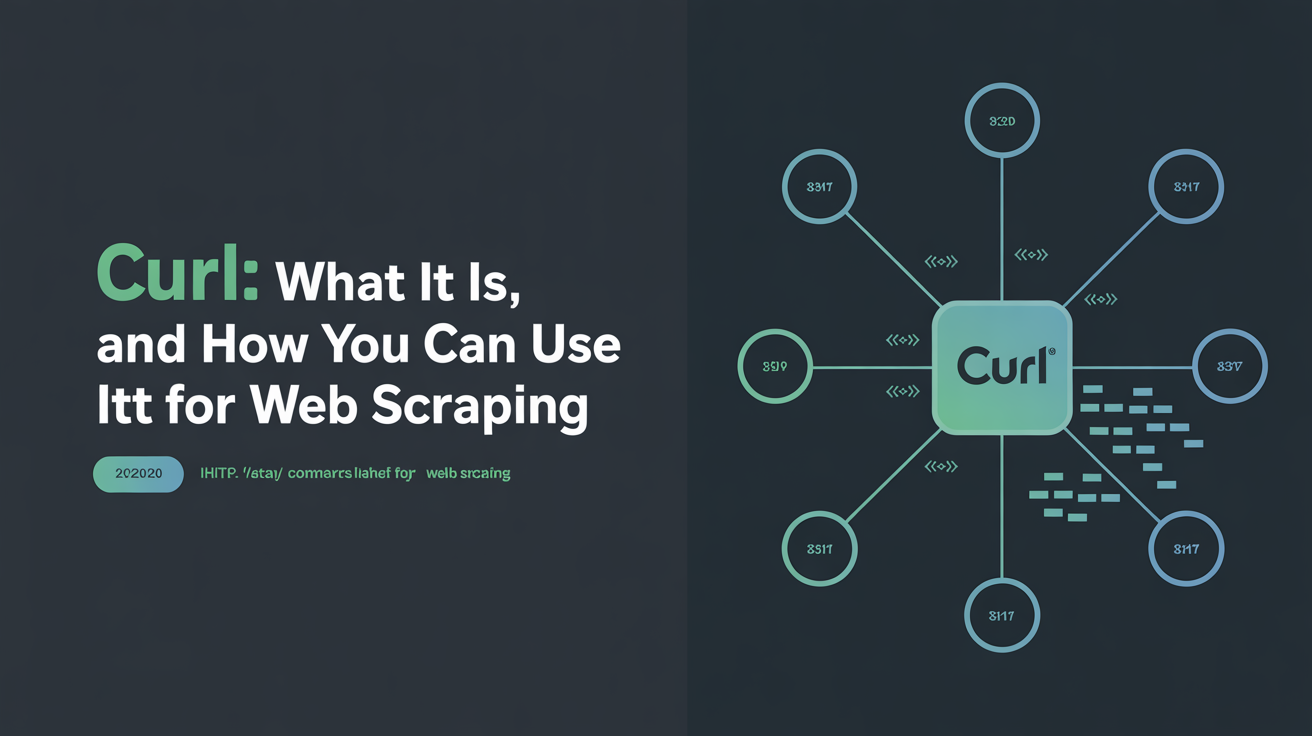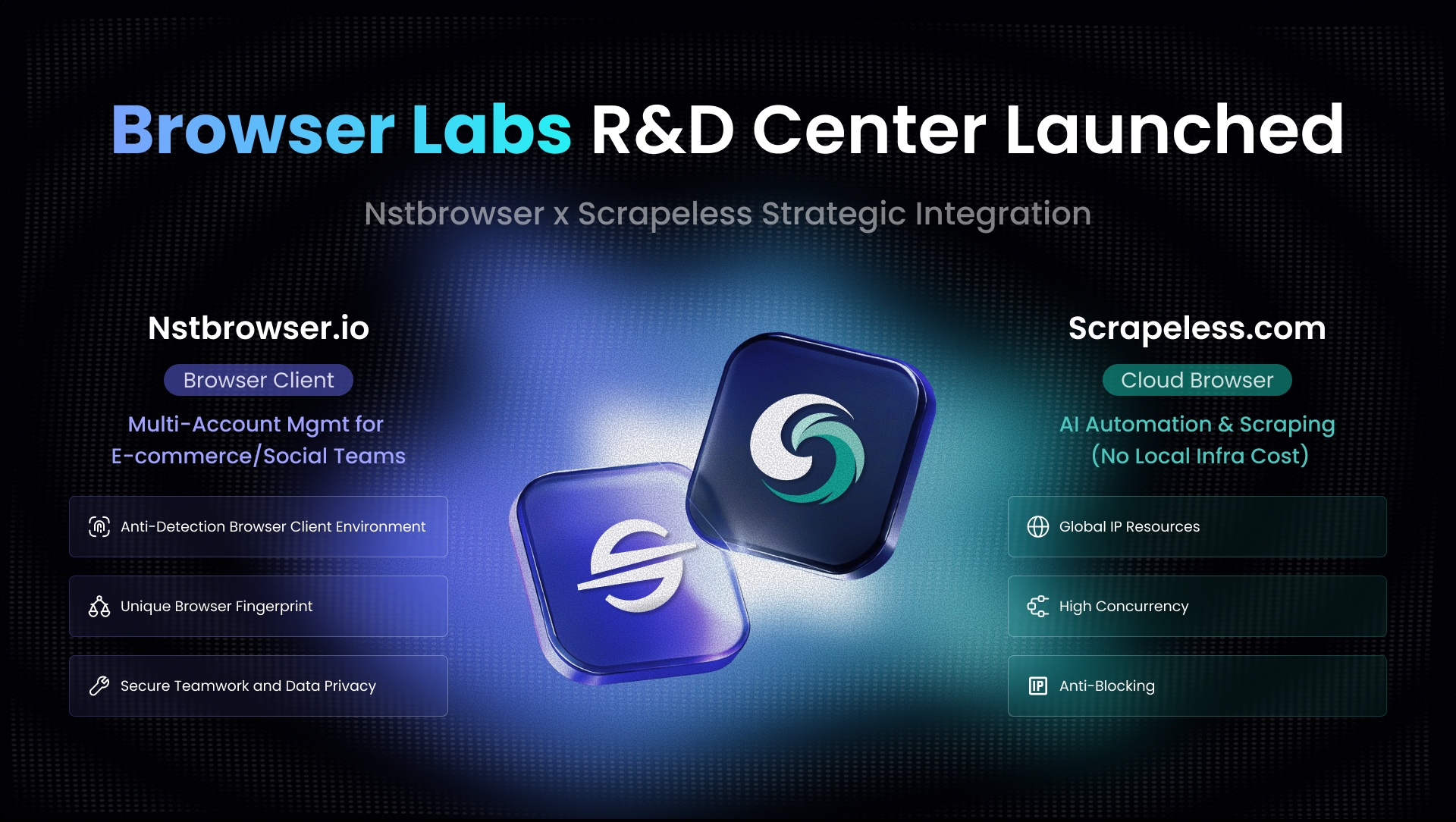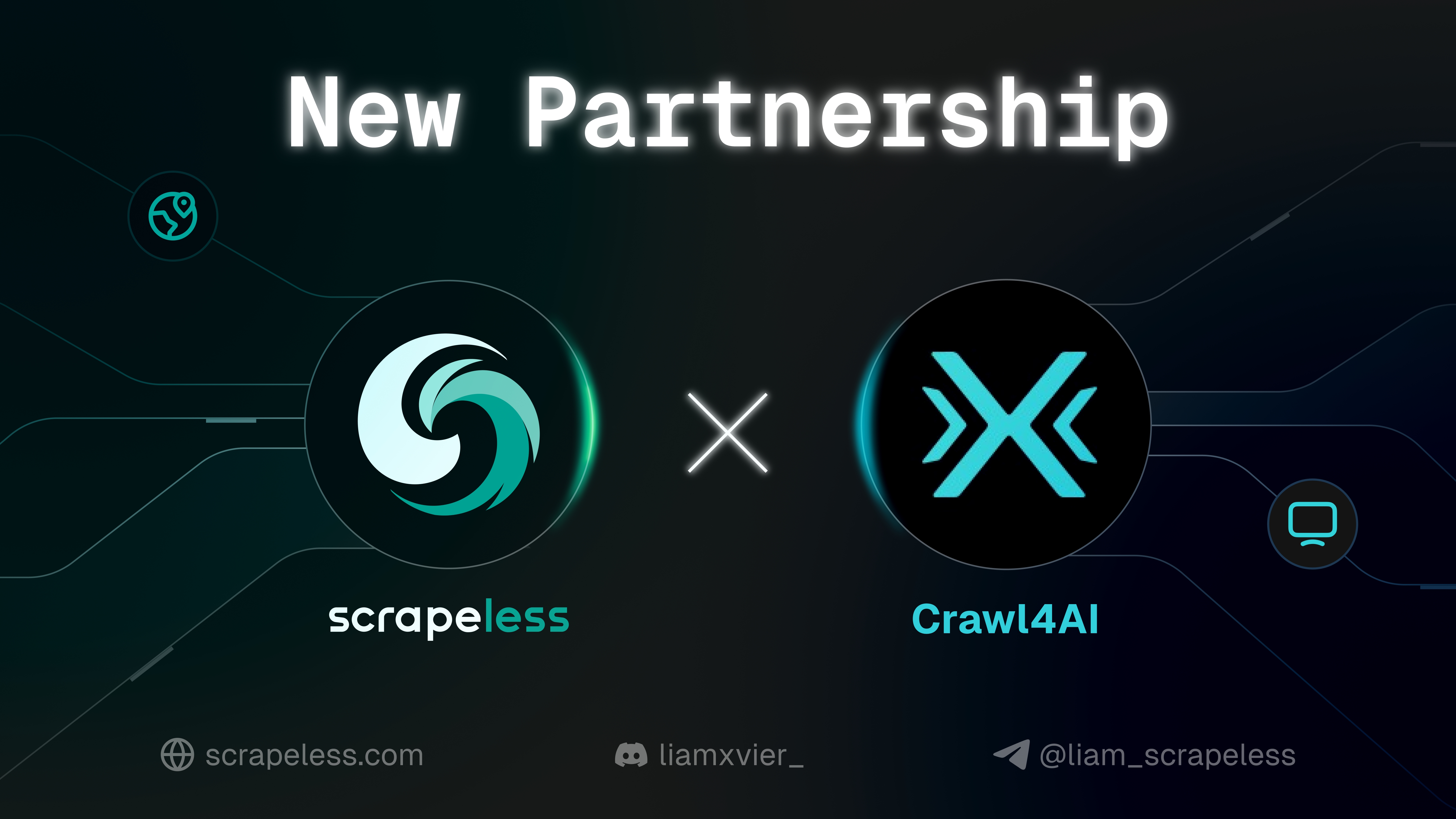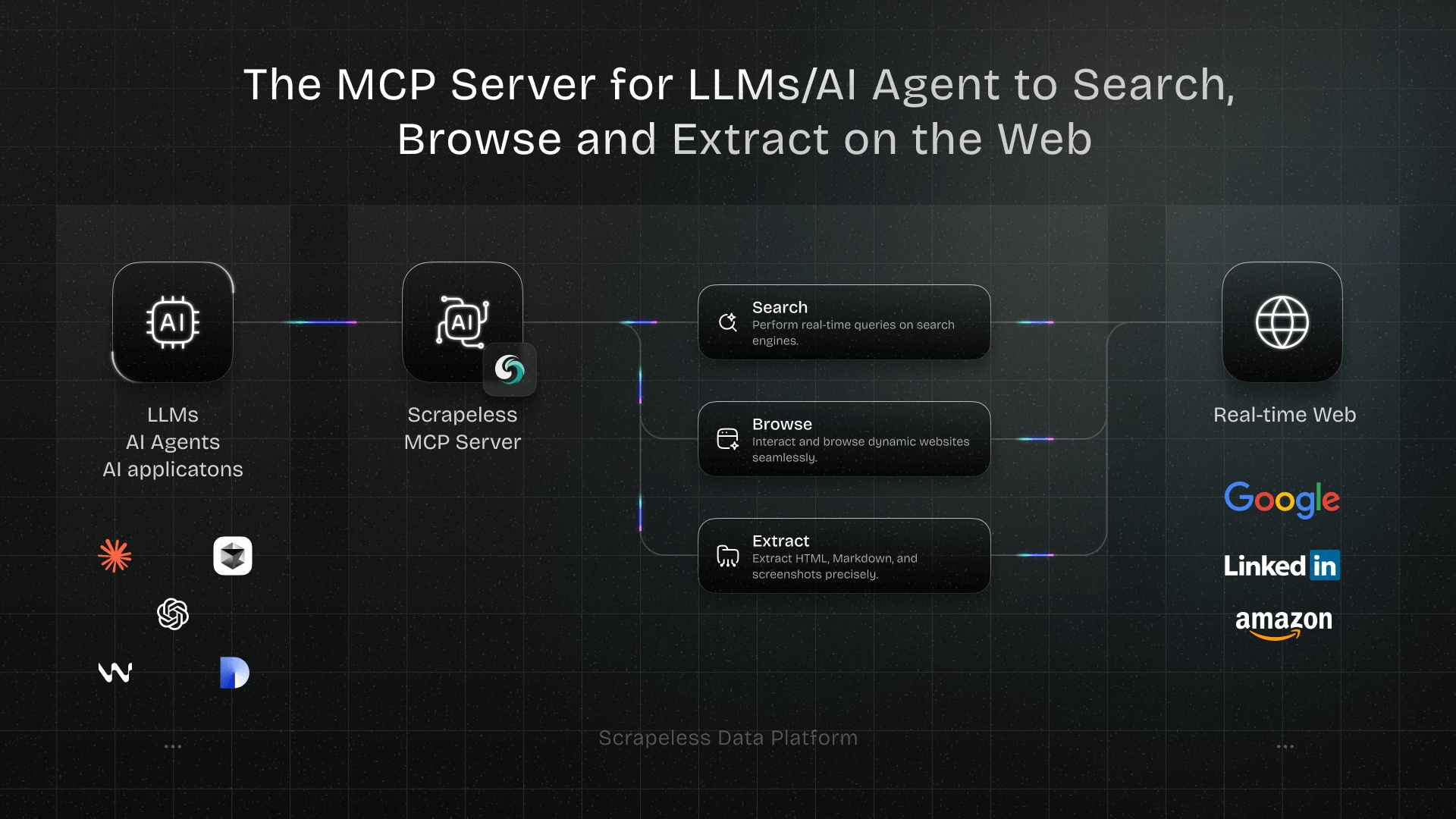cURL: What It Is, And How You Can Use It For Web Scraping
Expert Network Defense Engineer
Key Takeaways
- cURL is a powerful command-line tool for transferring data with URL syntax, supporting various protocols including HTTP and HTTPS.
- It is a fundamental utility for web scraping, allowing direct interaction with web servers to retrieve raw HTML content.
- While cURL excels at fetching data, it requires additional tools or scripting languages for parsing and advanced data extraction.
- This guide provides 10 practical ways to leverage cURL for web scraping, from basic requests to handling cookies and proxies.
- For complex web scraping tasks and bypassing anti-bot measures, integrating cURL with specialized services like Scrapeless offers enhanced capabilities.
Introduction
In the realm of web development and data extraction, cURL stands as a ubiquitous and indispensable command-line tool. Short for "Client URL," cURL is designed to transfer data to or from a server using various protocols, making it a Swiss Army knife for interacting with web resources. For web scrapers, cURL serves as a foundational utility, enabling direct communication with web servers to fetch raw HTML, inspect headers, and simulate browser requests. While cURL itself doesn't parse the data, its ability to reliably retrieve web content makes it an essential first step in many scraping workflows. This comprehensive guide, "cURL: What It Is, And How You Can Use It For Web Scraping," will demystify cURL, explain its core functionalities, and present 10 practical methods for utilizing it effectively in your web scraping projects. For those seeking a more streamlined and robust solution for complex scraping challenges, Scrapeless offers advanced capabilities that complement cURL's strengths.
What is cURL?
cURL is a free and open-source command-line tool and library (libcurl) for transferring data with URL syntax. Developed by Daniel Stenberg, it supports a wide range of protocols, including HTTP, HTTPS, FTP, FTPS, SCP, SFTP, TFTP, DICT, TELNET, LDAP, FILE, and more. Its versatility makes it invaluable for developers, system administrators, and anyone needing to interact with web services or transfer files programmatically [1].
For web scraping, cURL's primary utility lies in its ability to send HTTP requests and receive responses directly from web servers. This allows scrapers to bypass the need for a full browser, making requests faster and more resource-efficient. It provides granular control over HTTP requests, enabling users to customize headers, handle cookies, manage redirects, and authenticate requests, all of which are crucial for effective web scraping.
10 Ways to Use cURL for Web Scraping
1. Basic GET Request to Fetch HTML
The most fundamental use of cURL in web scraping is to perform a simple GET request to retrieve the raw HTML content of a webpage. This command sends an HTTP GET request to the specified URL and prints the server's response (usually the HTML source code) to your terminal [2].
Code Operation Steps:
- Open your terminal or command prompt.
- Execute the
curlcommand followed by the target URL:This command will output the entire HTML content ofbashcurl https://www.example.comhttps://www.example.comdirectly to your console. This is the starting point for any web scraping task, allowing you to inspect the page structure and identify the data you want to extract.
2. Saving Web Page Content to a File
While displaying HTML in the terminal is useful for quick inspection, for actual scraping, you'll often want to save the content to a file for later parsing. cURL provides options to save the output directly to a specified file [3].
Code Operation Steps:
-
Use the
-o(or--output) flag to specify an output filename:bashcurl https://www.example.com -o example.htmlThis command fetches the content from
https://www.example.comand saves it into a file namedexample.htmlin your current directory. This is particularly useful when you need to store multiple pages or large amounts of data. -
Use the
-O(or--remote-name) flag to save the file with its remote name:bashcurl -O https://www.example.com/image.jpgIf you're downloading a file (like an image, PDF, or a generated report),
-Owill save it using the filename provided by the server, which is often more convenient.
3. Following HTTP Redirects
Many websites use HTTP redirects (e.g., 301 Moved Permanently, 302 Found) to guide users to different URLs. By default, cURL does not follow these redirects. To ensure you get the final content, you need to instruct cURL to follow them [4].
Code Operation Steps:
- Use the
-L(or--location) flag:This command will automatically follow any HTTP redirects until it reaches the final destination, then it will display the content of that page. This is crucial for scraping sites that use URL shorteners or redirect users based on location or device.bashcurl -L https://shorturl.at/fgrz8
4. Customizing User-Agent Header
Websites often inspect the User-Agent header to identify the client making the request. Sending a default cURL User-Agent can quickly lead to blocks or different content. Customizing this header to mimic a real browser is a common web scraping technique [5].
Code Operation Steps:
- Use the
-A(or--user-agent) flag:By setting a realisticbashcurl -A "Mozilla/5.0 (Windows NT 10.0; Win64; x64) AppleWebKit/537.36 (KHTML, like Gecko) Chrome/91.0.4472.124 Safari/537.36" https://www.example.comUser-Agentstring, yourcURLrequest appears to originate from a standard web browser, making it less likely to be flagged as a bot. This is often the first line of defense against basic anti-scraping measures.
5. Sending Custom HTTP Headers
Beyond the User-Agent, websites use a variety of HTTP headers to fingerprint requests. cURL allows you to send any custom header, which is essential for mimicking browser behavior more closely, handling authentication, or specifying content types [6].
Code Operation Steps:
- Use the
-H(or--header) flag:You can add multiplebashcurl -H "Accept-Language: en-US,en;q=0.9" \ -H "Referer: https://www.google.com/" \ https://www.example.com-Hflags to include various headers likeAccept,Accept-Encoding,Connection, etc. This level of control helps in bypassing more sophisticated anti-bot systems that analyze the full set of request headers.
6. Handling Cookies
Many websites use cookies to manage user sessions, track activity, and personalize content. For web scraping, you might need to send specific cookies with your requests or save cookies received from the server for subsequent requests. cURL provides options for both [7].
Code Operation Steps:
-
Send cookies with a request using the
-b(or--cookie) flag:bashcurl -b "sessionid=abc123; csrftoken=xyz456" https://www.example.com/protected-pageThis is useful when you have obtained cookies from a previous interaction and need to maintain a session.
-
Save cookies received from the server using the
-c(or--cookie-jar) flag:bashcurl -c cookies.txt https://www.example.com/loginThis command will save all cookies received from the
loginpage intocookies.txt. You can then use thiscookies.txtfile with the-bflag in subsequent requests to maintain the session.
7. Making POST Requests with Data
Web scraping often involves interacting with forms or APIs that require sending data via POST requests. cURL can easily handle this by allowing you to specify the data to be sent [8].
Code Operation Steps:
-
Use the
-X POST(or--request POST) flag along with-d(or--data) for form data:bashcurl -X POST \ -d "username=myuser&password=mypass" \ https://www.example.com/loginThe
-dflag sends data asapplication/x-www-form-urlencoded. For JSON data, you would typically combine-H "Content-Type: application/json"with-d. -
For JSON data, specify the content type:
bashcurl -X POST \ -H "Content-Type: application/json" \ -d "{\"key\":\"value\", \"another_key\":\"another_value\"}" \ https://www.example.com/api/dataThis allows you to interact with APIs that expect JSON payloads, a common scenario in modern web scraping.
8. Using Proxies for IP Rotation
To avoid IP-based blocking and rate limiting, web scrapers often use proxies to route requests through different IP addresses. cURL supports specifying a proxy server for your requests [9].
Code Operation Steps:
- Use the
-x(or--proxy) flag:For authenticated proxies, you can include credentials:bashcurl -x http://proxy.example.com:8080 https://www.example.comcurl -x http://user:pass@proxy.example.com:8080 https://www.example.com. WhilecURLcan use a single proxy, for true IP rotation, you would typically integrate it with a script that cycles through a list of proxies or use a proxy service that handles rotation automatically.
9. Limiting Request Rate (Throttling)
Sending requests too quickly can overwhelm a server and lead to temporary or permanent blocks. While cURL itself doesn't have built-in throttling like Scrapy's AutoThrottle, you can integrate it with shell scripting to introduce delays between requests [10].
Code Operation Steps:
- Use
sleepcommand in a loop (Bash example):This simple script fetches 5 pages with a 2-second delay between each request. Adjusting thebashfor i in {1..5}; do curl https://www.example.com/page-$i.html -o page-$i.html; sleep 2; # Wait for 2 seconds donesleepduration helps in being polite to the server and avoiding rate-limiting mechanisms.
10. Converting cURL Commands to Python Requests
Often, you might start by crafting a cURL command to test a request, and then want to translate that into a Python script for more complex scraping logic. Many tools and libraries can automate this conversion, making it easier to transition from command-line testing to programmatic scraping.
Code Operation Steps:
-
Use an online
cURLto Python converter: Websites likecurlconverter.comallow you to paste acURLcommand and get the equivalent Pythonrequestscode. This is incredibly useful for quickly setting up complex requests in Python. -
Manual Conversion (Example):
AcURLcommand like:bashcurl -X POST \ -H "Content-Type: application/json" \ -H "User-Agent: MyCustomScraper/1.0" \ -d "{\"query\":\"web scraping\"}" \ https://api.example.com/searchCan be converted to Python
requestsas:pythonimport requests import json url = "https://api.example.com/search" headers = { "Content-Type": "application/json", "User-Agent": "MyCustomScraper/1.0" } data = {"query": "web scraping"} response = requests.post(url, headers=headers, data=json.dumps(data)) print(response.status_code) print(response.json())This conversion allows you to leverage
cURLfor initial testing and then seamlessly integrate the request logic into a more comprehensive Python-based web scraper. For advanced scenarios, Scrapeless can handle the entire request lifecycle, including rendering JavaScript and bypassing anti-bot measures, making it an ideal companion forcURL's initial data fetching capabilities.
Comparison Summary: cURL vs. Python Requests for Web Scraping
While cURL is excellent for quick command-line interactions, Python's requests library offers more programmatic control and integration within larger applications. Here's a comparison:
| Feature / Tool | cURL (Command Line) | Python Requests Library |
|---|---|---|
| Purpose | Data transfer, quick testing, scripting | Programmatic HTTP requests, web scraping |
| Ease of Use | Simple for basic tasks, complex for advanced | Intuitive API, easy for most tasks |
| Flexibility | High, granular control over requests | High, integrates well with Python ecosystem |
| Parsing HTML | None (outputs raw HTML) | Requires libraries like BeautifulSoup/lxml |
| JavaScript Rendering | None | Requires headless browsers (Selenium/Playwright) |
| Cookie Management | Manual (-b, -c flags) |
Automatic with requests.Session(), manual control |
| Proxy Support | Yes (-x flag) |
Yes (via proxies parameter) |
| Error Handling | Manual (exit codes, output parsing) | Python exceptions, status codes |
| Integration | Shell scripts, other command-line tools | Python applications, data science workflows |
| Learning Curve | Low for basics, moderate for advanced | Low to moderate |
This comparison highlights that cURL is a powerful tool for initial data fetching and testing, especially when combined with shell scripting. However, for building robust, scalable, and maintainable web scrapers, Python's requests library, often paired with parsing libraries and potentially headless browsers, provides a more comprehensive and integrated solution. For even greater ease and reliability, especially against anti-bot systems, specialized APIs like Scrapeless can abstract away many of these complexities.
Why Scrapeless Enhances Your cURL Web Scraping Efforts
While cURL is an excellent tool for direct interaction with web servers, modern web scraping often encounters challenges that cURL alone cannot easily overcome. Websites frequently employ advanced anti-bot measures, dynamic content rendered by JavaScript, and CAPTCHAs, leading to incomplete data or outright blocks. This is where Scrapeless provides a significant advantage, acting as a powerful complement to your cURL-based workflows.
Scrapeless is a fully managed web scraping API that abstracts away the complexities of bypassing sophisticated website defenses. By routing your requests through Scrapeless, you gain access to automatic proxy rotation, User-Agent and header optimization, CAPTCHA solving, and headless browser rendering capabilities. This means you can use cURL for its direct request power, but let Scrapeless handle the heavy lifting of anti-bot bypass, ensuring reliable data delivery. Whether you're testing endpoints with cURL or building a full-fledged scraper, integrating with Scrapeless transforms challenging scraping tasks into seamless operations, allowing you to focus on data analysis rather than fighting website defenses.
Conclusion and Call to Action
cURL is an incredibly versatile and powerful command-line tool that forms a cornerstone of many web scraping and data transfer tasks. From simple GET requests to complex POST operations, handling cookies, and utilizing proxies, cURL provides granular control over HTTP interactions, making it an invaluable asset for any developer or data professional. By mastering the 10 methods outlined in this guide, you can significantly enhance your ability to fetch raw web content and interact with web services directly.
However, the landscape of web scraping is constantly evolving, with websites deploying increasingly sophisticated anti-bot technologies. While cURL is a fantastic starting point, for robust, scalable, and hassle-free data extraction from complex, dynamic websites, specialized solutions are often necessary. Scrapeless offers a comprehensive API that handles these advanced challenges, allowing you to focus on extracting the data you need without getting bogged down by technical hurdles.
Ready to elevate your web scraping capabilities and overcome any obstacle?
Explore Scrapeless and streamline your data extraction today!
FAQ (Frequently Asked Questions)
Q1: What is cURL and why is it used in web scraping?
A1: cURL (Client URL) is a command-line tool for transferring data with URL syntax. In web scraping, it's used to send HTTP requests to web servers and retrieve raw HTML content, allowing direct interaction with websites without a full browser. It's a fundamental tool for testing requests and fetching data.
Q2: Can cURL parse HTML or extract specific data points?
A2: No, cURL only fetches the raw content of a webpage. It does not have built-in capabilities to parse HTML, navigate the DOM, or extract specific data points. For parsing and extraction, you would typically pipe cURL's output to other command-line tools (like grep, awk, sed) or use programming languages with libraries like BeautifulSoup or lxml.
Q3: How can cURL help bypass anti-scraping measures?
A3: cURL can help bypass basic anti-scraping measures by allowing you to customize HTTP headers (like User-Agent, Referer), send cookies to maintain sessions, and use proxies for IP rotation. For more advanced anti-bot systems (e.g., JavaScript challenges, CAPTCHAs), it often needs to be combined with other tools or specialized services.
Q4: Is cURL suitable for large-scale web scraping projects?
A4: While cURL is powerful for individual requests and scripting, for very large-scale or complex web scraping projects, it's often integrated into larger systems. These systems might use programming languages (like Python) to manage cURL commands, handle parsing, implement sophisticated proxy rotation, and manage error handling. Specialized web scraping APIs like Scrapeless can also be used to abstract away many of these complexities.
Q5: How does Scrapeless complement cURL for web scraping?
A5: Scrapeless enhances cURL by providing a managed API that handles advanced web scraping challenges such as anti-bot bypass, JavaScript rendering, and CAPTCHA solving. You can use cURL to send requests to the Scrapeless API, and Scrapeless will manage the complexities of interacting with the target website, returning clean, structured data, thus streamlining your scraping efforts.
References
[1-5] ZenRows: Web Scraping with cURL [Best Guide 2025]: ZenRows cURL Scraping
[6] Scrapfly: How to Use cURL For Web Scraping: Scrapfly cURL Guide
[7] curl.se: curl - Tutorial: cURL Official Tutorial
[8] Medium/@datajournal: Web Scraping With cURL Made Easy: Medium cURL Scraping
[9] Oxylabs: Web Scraping With cURL Tutorial 2025: Oxylabs cURL Tutorial
[10] Scrapingant: cURL Cheat Sheet - Data Extraction Guide with Bash: Scrapingant cURL Cheatsheet
At Scrapeless, we only access publicly available data while strictly complying with applicable laws, regulations, and website privacy policies. The content in this blog is for demonstration purposes only and does not involve any illegal or infringing activities. We make no guarantees and disclaim all liability for the use of information from this blog or third-party links. Before engaging in any scraping activities, consult your legal advisor and review the target website's terms of service or obtain the necessary permissions.



